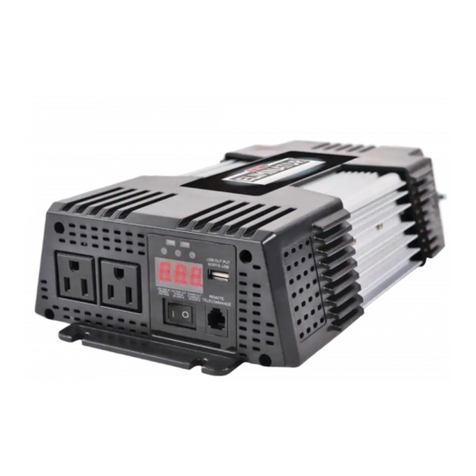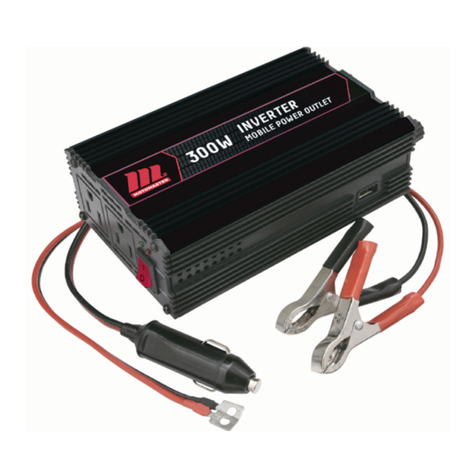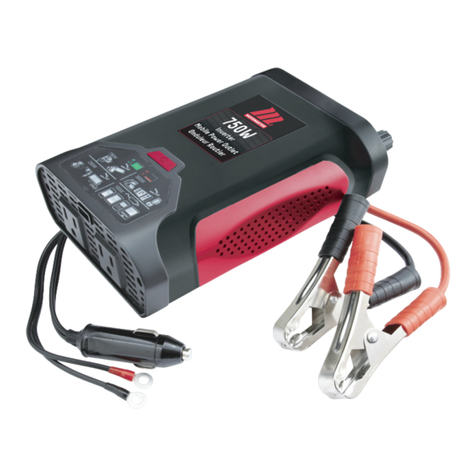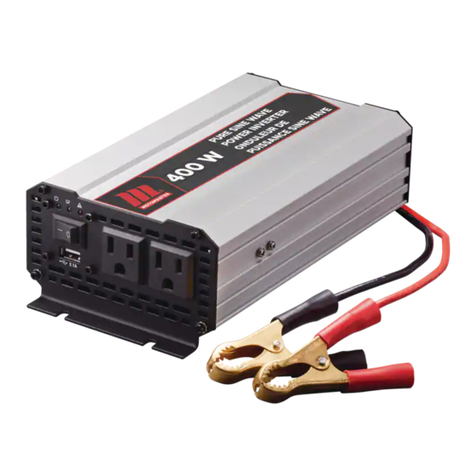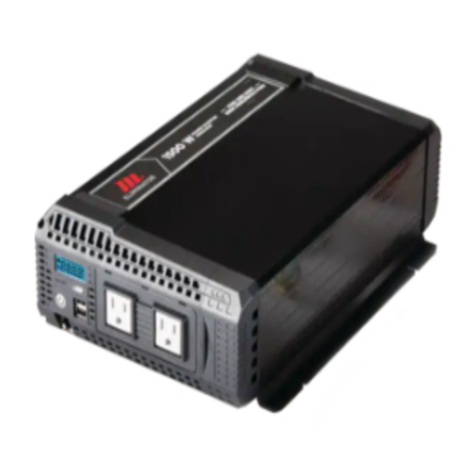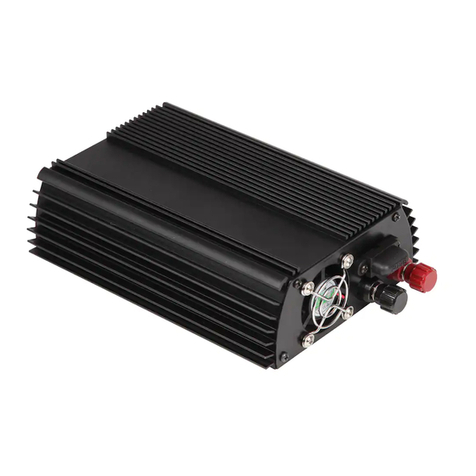
5
CAUTIONS: INVERTER OPERATING
ENVIRONMENT
• Surrounding air temperature should be
between -20°C and 40°C (4°F and 104°F)
– ideally between 15°C and 25°C (60°F
and 80°F).
• Keep the inverter away from direct sunlight if
at all possible.
• Keep the area surrounding the inverter clear
to ensure free air circulation around the unit.
Do not place items on or over the inverter
during operation. The unit will shut down if
the internal temperature gets too hot. Restart
the inverter after it cools.
• This inverter will only operate
from a 12 V power source. Do not attempt
to connect the inverter to any other power
source, including any AC power source.
• Do not reverse DC input polarity – this will
void the warranty.
APPLIANCE CAUTIONS
• Do NOT plug in battery chargers for cordless
power tools if the charger carries a warning
that dangerous voltages are present at the
battery terminals.
• Certain chargers for small nickel-cadmium
or nickel-metal-hydride batteries can be
damaged if powered by this inverter. Two
types of appliances are susceptible to
damage:
Small, battery-operated appliances such
as flashlights.
Cordless razors and toothbrushes that
plug directly into an AC receptacle.
• Do NOT use this inverter with the above two
types of equipment.
• The majority of portable appliances do not
have this problem. Most portable appliances
use separate transformers or chargers that
plug into AC receptacles to supply a low-
voltage DC or AC output to the appliance. If
the appliance label states that the charger
or adaptor produces a low-voltage DC or
AC output (30 V or less), there will be no
problem powering that charger or adaptor.
• Some fans with synchronous motors may
slightly increase in speed (RPM) when
powered by the inverter. This is not harmful
to the fan or to the inverter.
• Route appliance cords and extension cords
to prevent them from being accidentally pinched,
crushed or abraded, and to prevent tripping hazards.
• Use safety approved extension cords rated at
15 A or higher.
• GFCI devices may not work with modified
sine wave power.
• This inverter is not tested for use with
medical equipment.
• This inverter is not tested for use in marine
applications.
• In the event of a continuous audible alarm or
automatic shutdown, turn the inverter off
immediately. Do not restart the inverter until
the source of the problem has been identified
and corrected.
• When attempting to power lead-acid battery
chargers with a modified sine wave, monitor
the temperature of the battery charger for
approximately 10 minutes. If the battery
charger becomes abnormally warm,
immediately disconnect it from the inverter.
SAFETY INFORMATION
Eliminator®






